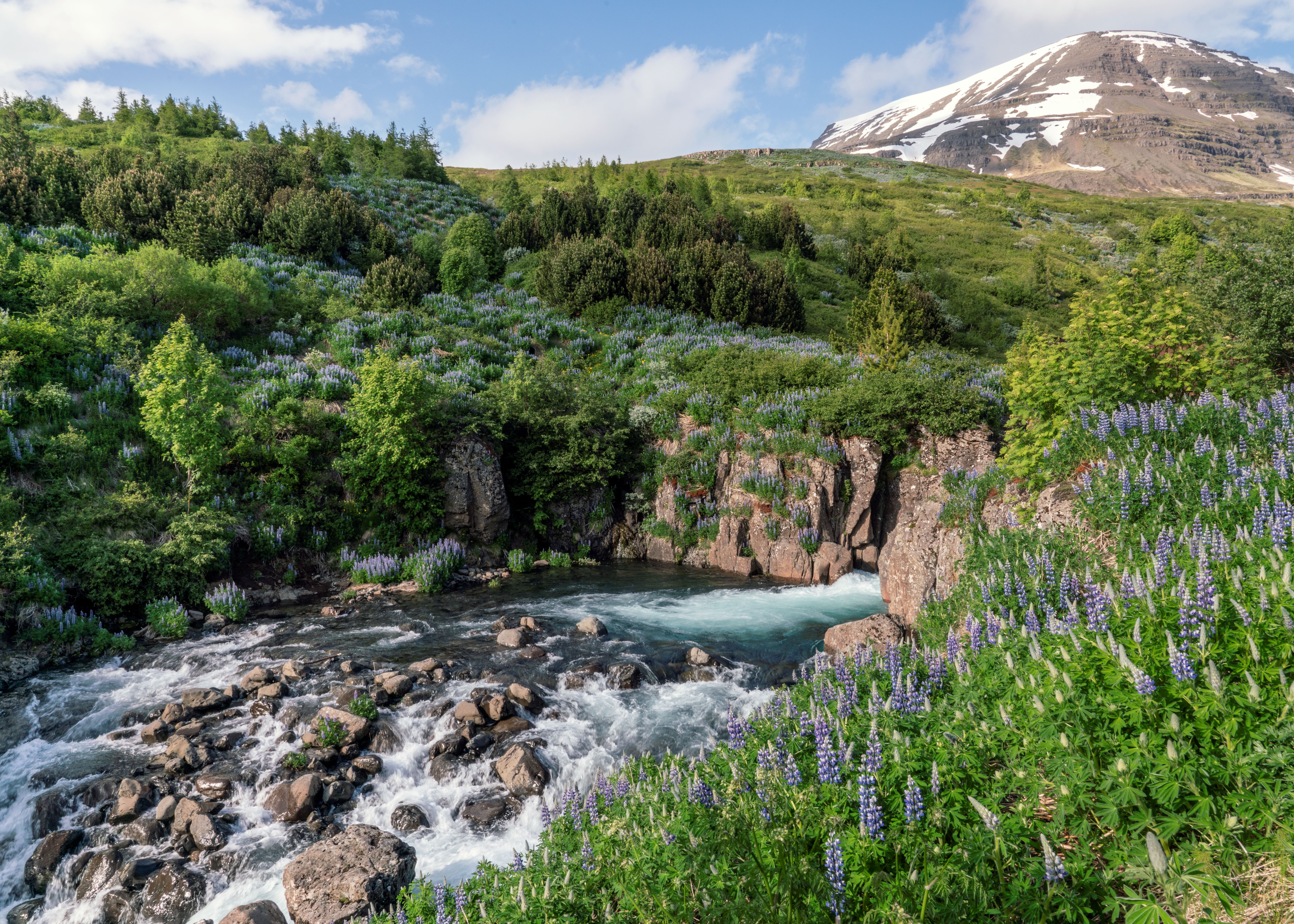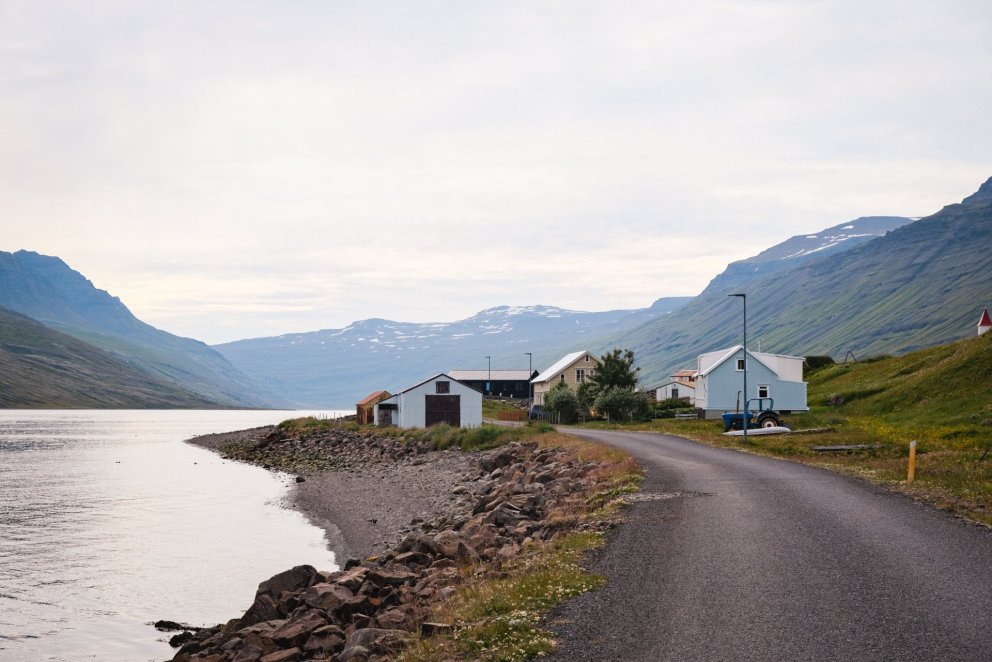Austurland's Hidden Gems
Below you’ll find 10 of our Hidden Gems Highlights in Austurland to discover this summer.
1. Landsendi
Located along Route 917 just before the Hellisheiði pass in Austurland, Landsendi means the end of the land. It is a quiet coastal gem with dramatic views over the Atlantic. The trail begins at a small roadside pull off and leads along a grassy path toward the cliffs known as Landsendahorn.
The rhyolite cliffs here, called Móvíkurflug, drop steeply into the sea. Their layers of yellow brown and greenish grey create a vivid contrast with the ocean below. The hike is about five kilometers in total and easy to follow with only a shallow stream to cross.
At the edge you will find a small metal cylinder tucked among the rocks holding a guestbook and a stamp.
Landsendi is perfect for those looking to experience East Iceland’s raw and untouched beauty in a peaceful setting. With its colourful cliffs sweeping views and quiet atmosphere it offers a powerful sense of standing at the edge of the land.
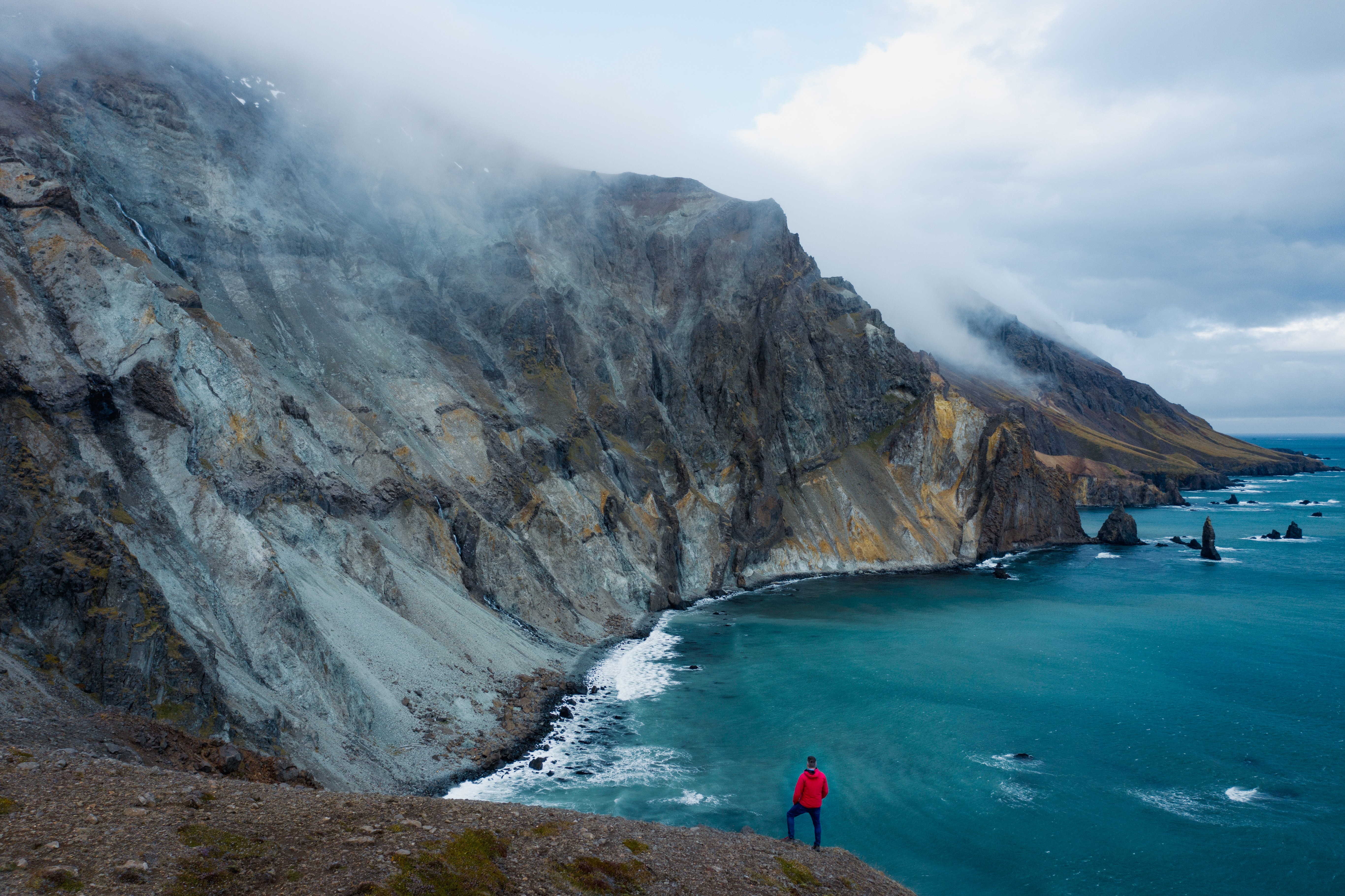
2. Stöðvarfjörður
Stöðvarfjörður is a narrow fjord in East Iceland known for its dramatic mountains and quiet atmosphere. At its base lies a small village with a creative spirit and one of Iceland’s most beloved rock museums Steinasafn Petru.
Further into the fjord is one of Iceland’s most important archaeological sites at Stöð where the remains of a large Viking Age longhouse were uncovered. Research suggests the area was used seasonally for fishing and trade long before permanent settlement reshaping the understanding of early Icelandic history.
The area also offers good hiking. A marked trail leads through Jafnadalur valley to Steinboginn a natural stone arch on the slopes of Mount Álftafell. Along the way you pass Einbúi a tall freestanding rock. The hike takes around two to three hours round trip and is suitable for most walkers.
Stöðvarfjörður is a quiet stop with rich history striking landscapes and easy access to trails and local culture.
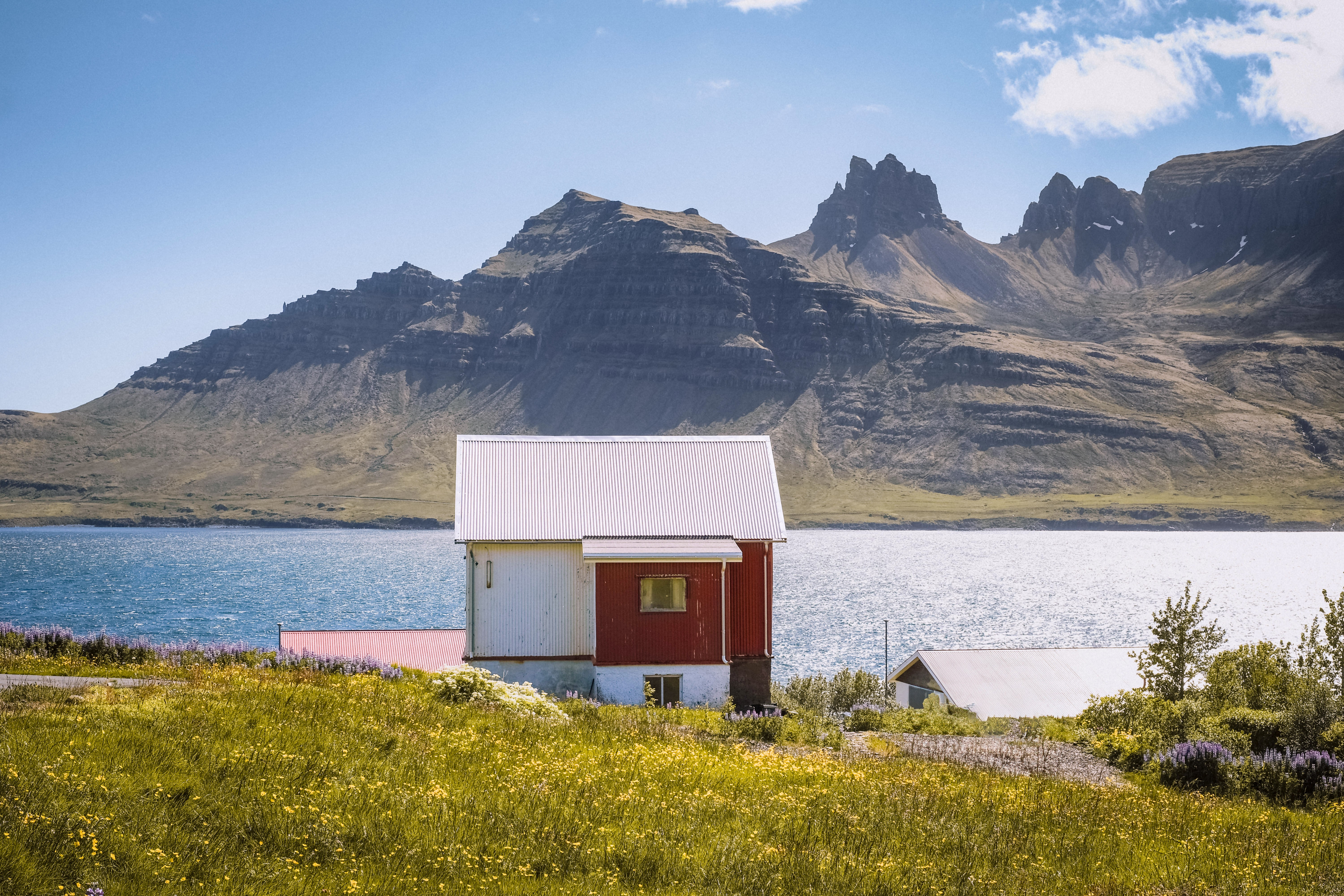
3. Stapinn in Stapavík
Stapinn is a striking sea cliff rising about twenty meters out of the ocean just off the coast at Stapavík south of Djúpivogur. Set apart from the mainland it stands alone in the surf and creates a dramatic focal point along an otherwise quiet stretch of black sand.
This area is popular with both locals and visitors and is considered one of the natural highlights of the region. The surrounding beach south of Álftafjörður is known for its raw beauty and open views where the land meets the sea in a powerful way.
Reaching Stapinn requires only a short walk from nearby parking areas making it an easy stop for anyone exploring the coast between Djúpivogur and Höfn. It is perfect for a break and the perfect photo op.
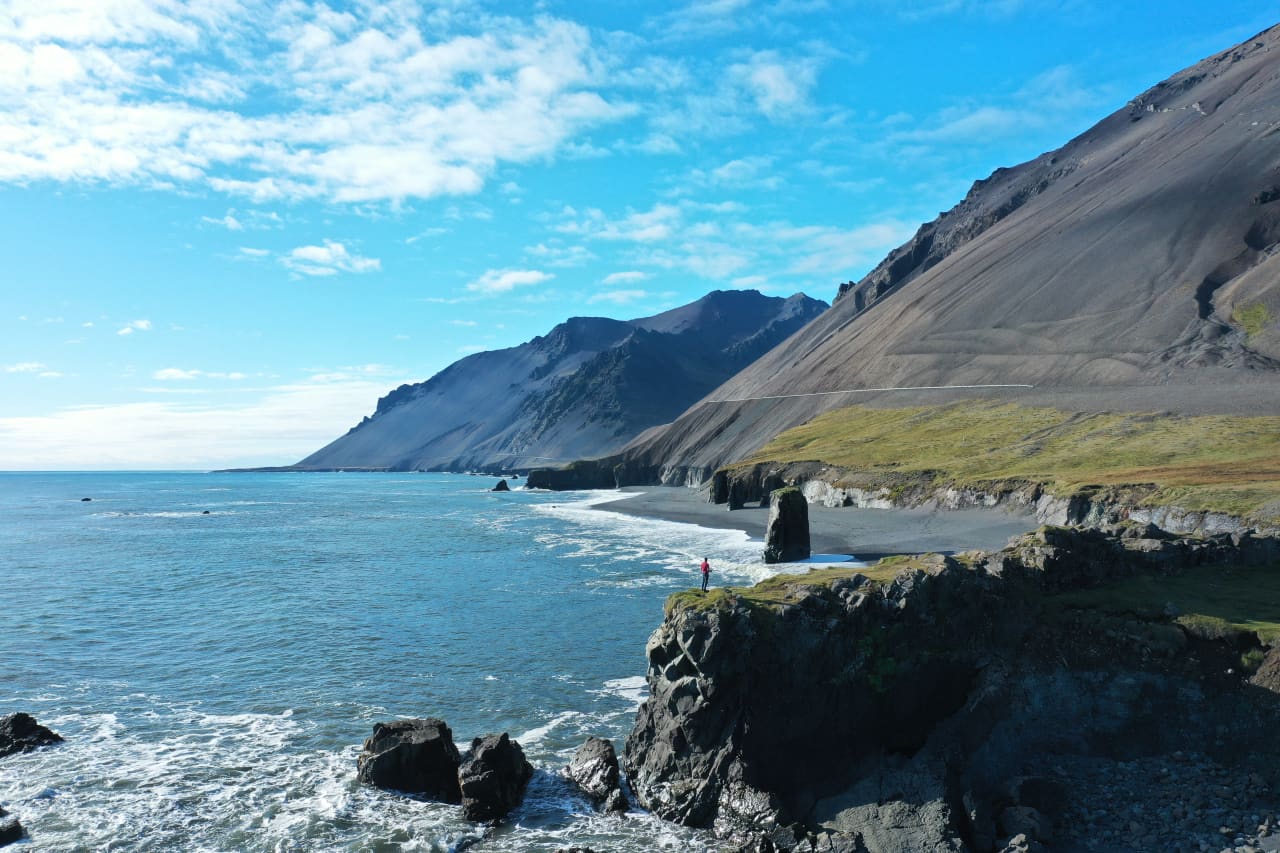
4. Sænautasel
Sænautasel is a historic turf farm located high in the moorlands of East Iceland near the eastern edge of the highlands between Egilsstaðir and Mývatn. Built in the late nineteenth century and abandoned during the Askja eruption in 1875 it has been carefully restored and now serves as a living museum of Icelandic rural life.
The buildings are made of stone wood and turf giving a rare and authentic glimpse into how people lived in isolated regions of Iceland just a few generations ago. Visitors can explore the farm buildings and learn about the daily life of its former residents while enjoying a cup of coffee and homemade pancakes in the small café on site.
Sænautasel is surrounded by wide open landscapes rich in birdlife and summer wildflowers with walking paths leading out into the moors. The area is peaceful and remote making it a relaxing stop for anyone driving the inland route between North and East Iceland.
It is perfect for a quiet break and a step back in time with excellent photo opportunities and a strong sense of connection to Iceland’s rural past.
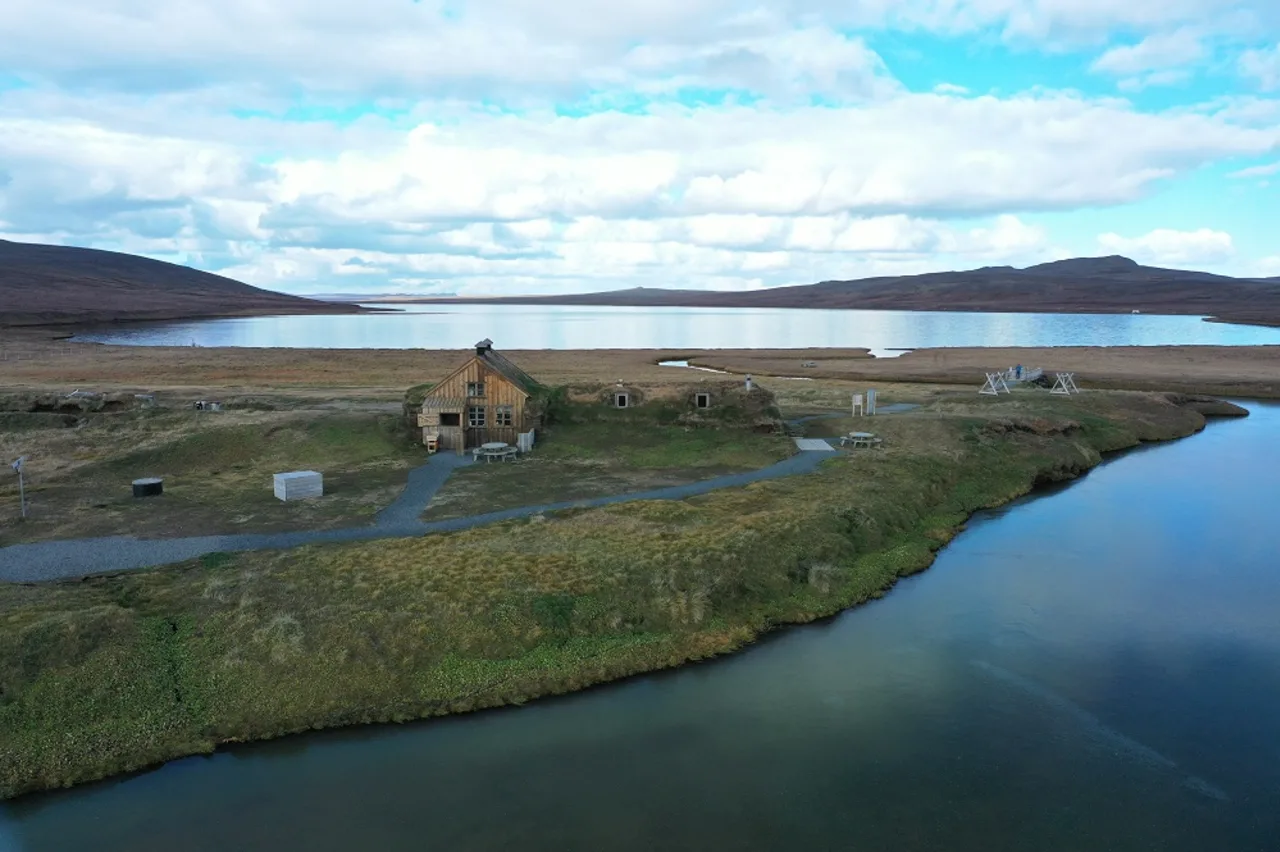
5. Mjóifjörður
Mjóifjörður, meaning “narrow fjord,” is an 18 kilometre long and 2 kilometre wide fjord set between steep mountains in East Iceland is one of the most remote and least visited fjords in the region.
At its heart lies the tiny village of Brekkuþorp with thirteen permanent residents. The area includes the remains of a large Norwegian whaling station from around 1900 and the notable Klifbrekkufossar waterfall which cascades in seven steps near the fjord mouth.
A gravel road leads from Route 1 up a mountain pass and down to the fjord. This road is usually open from late spring to early autumn. Visitors can enjoy short walks to waterfalls, canyons and a haunting 1960's shipwreck near the shore.
Mjóifjörður is ideal for travellers seeking remote landscapes, beautiful fjord scenery and a glimpse into layered coastal history.
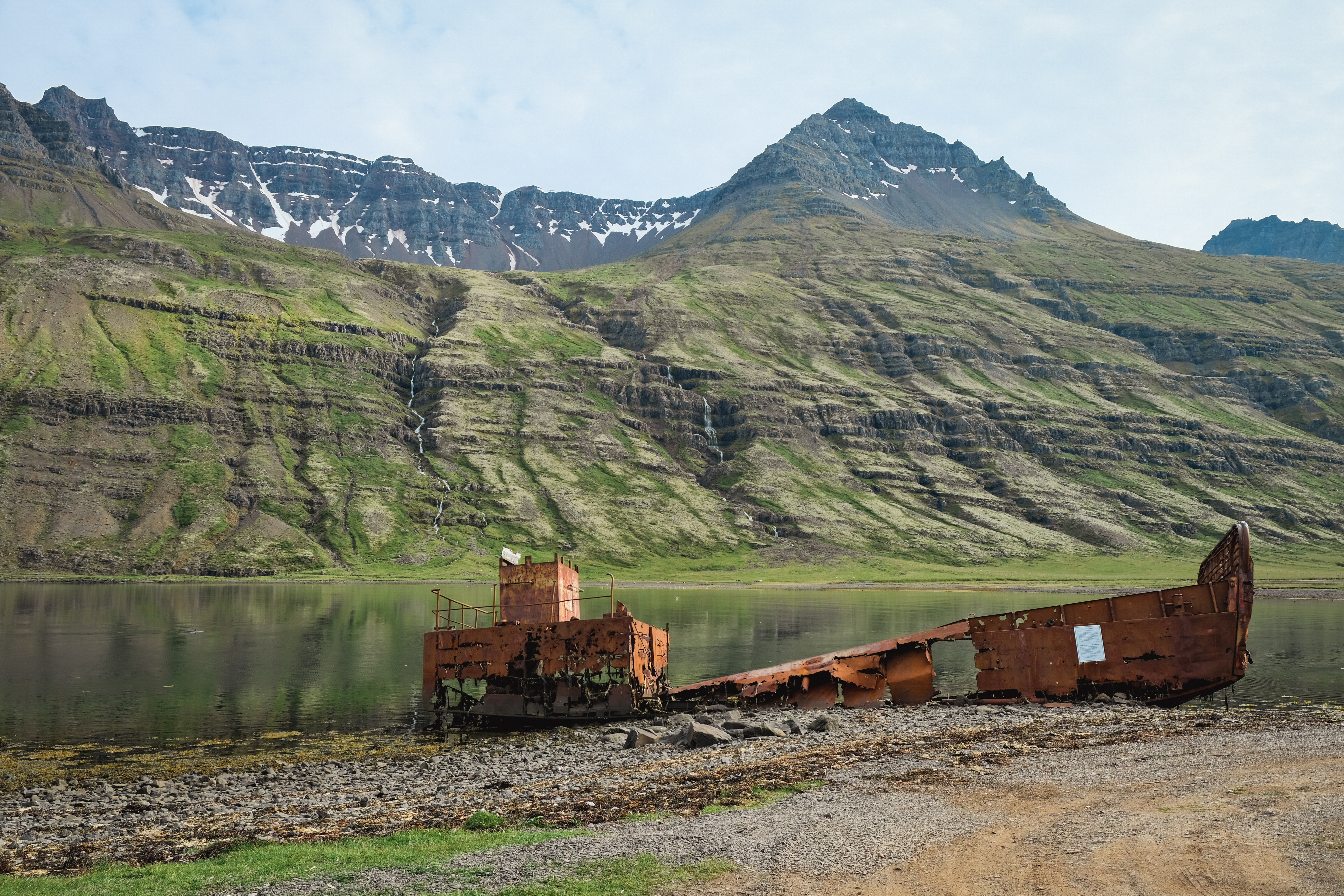
6. Strútsfoss
Strútsfoss is a tall and striking two tier waterfall located in the Fljótdalur valley in East Iceland. It drops a total of around one hundred and twenty meters and is surrounded by colorful cliffs that make it one of the most scenic waterfalls in the region.
The hike starts near Sturluflöt farm about forty minutes from Egilsstaðir by road. The trail follows the east side of the Fellsá river into the quiet valley of Villingadalur. It is a gentle and scenic walk with some uneven ground toward the end. The round trip is around seven to eight kilometers and takes about two to three hours.
A marked viewpoint offers a clear look at both tiers of the waterfall and the surrounding red and grey rock formations. A small metal cylinder near the viewpoint contains a guestbook and stamp for visitors.
Strútsfoss is a peaceful nature stop with impressive views.
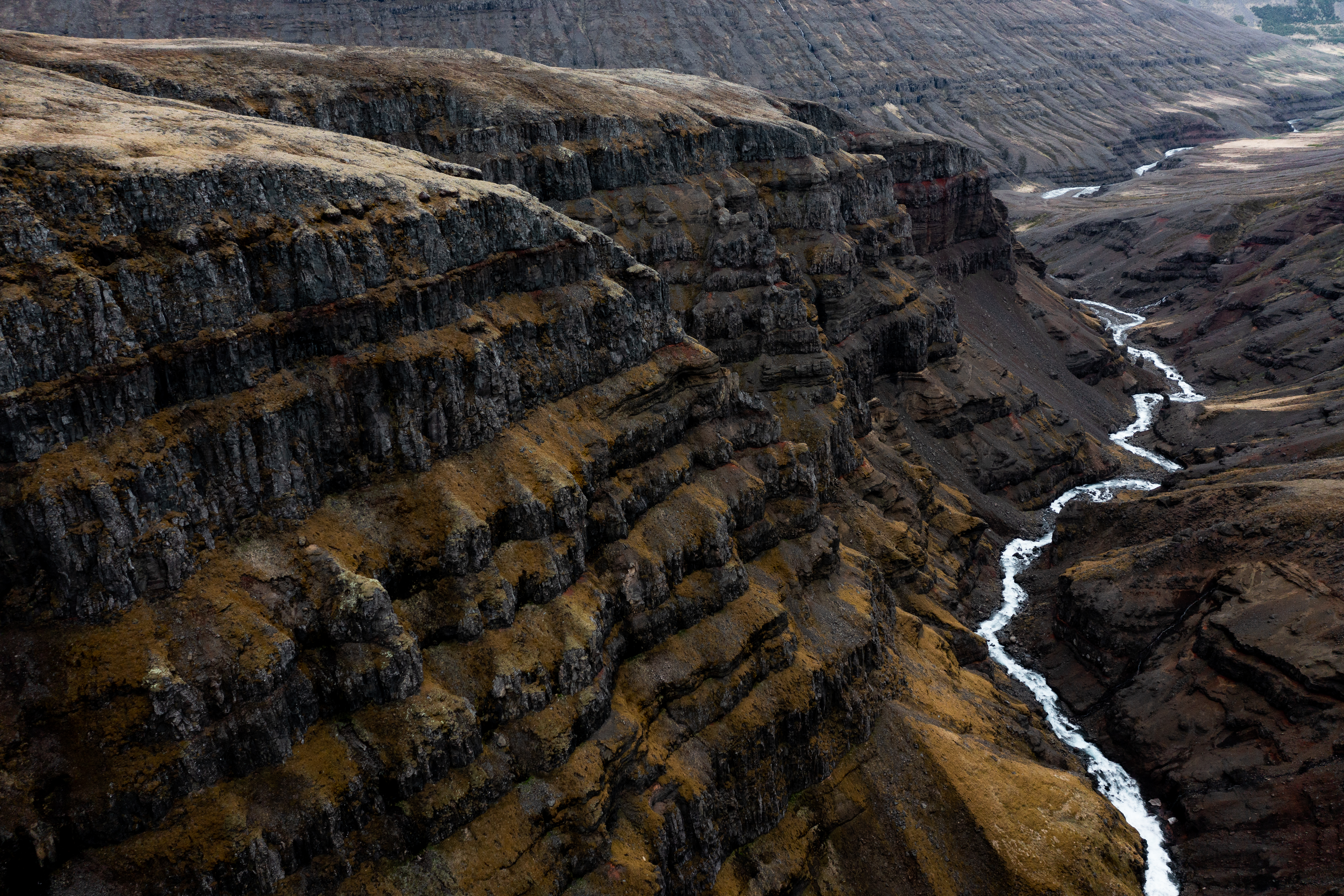
7. Bustarfell Museum
Bustarfell Museum lies in Hofsárdalur valley south of Vopnafjörður. It is housed in a well‑preserved turf farmhouse built around 1770 and continuously occupied by the same family until the 1960s.
Visitors enter a time capsule of rural Icelandic life. Three kitchens from different eras are on display along with domestic items that trace the evolution of daily routines from the 18th to the mid‑20th century. The museum still feels like a lived‑in home with many original furnishings and floors .
Next door Hjáleigan café offers home made cakes and coffee. The museum is open daily from June to August, and guided tours are available in summer with appointments possible during low season.
Bustarfell Museum is a unique gem, ideal for anyone interested in traditional turf architecture, family‑run heritage and countryside stories. It offers a direct and intimate connection to Austurland’s past.
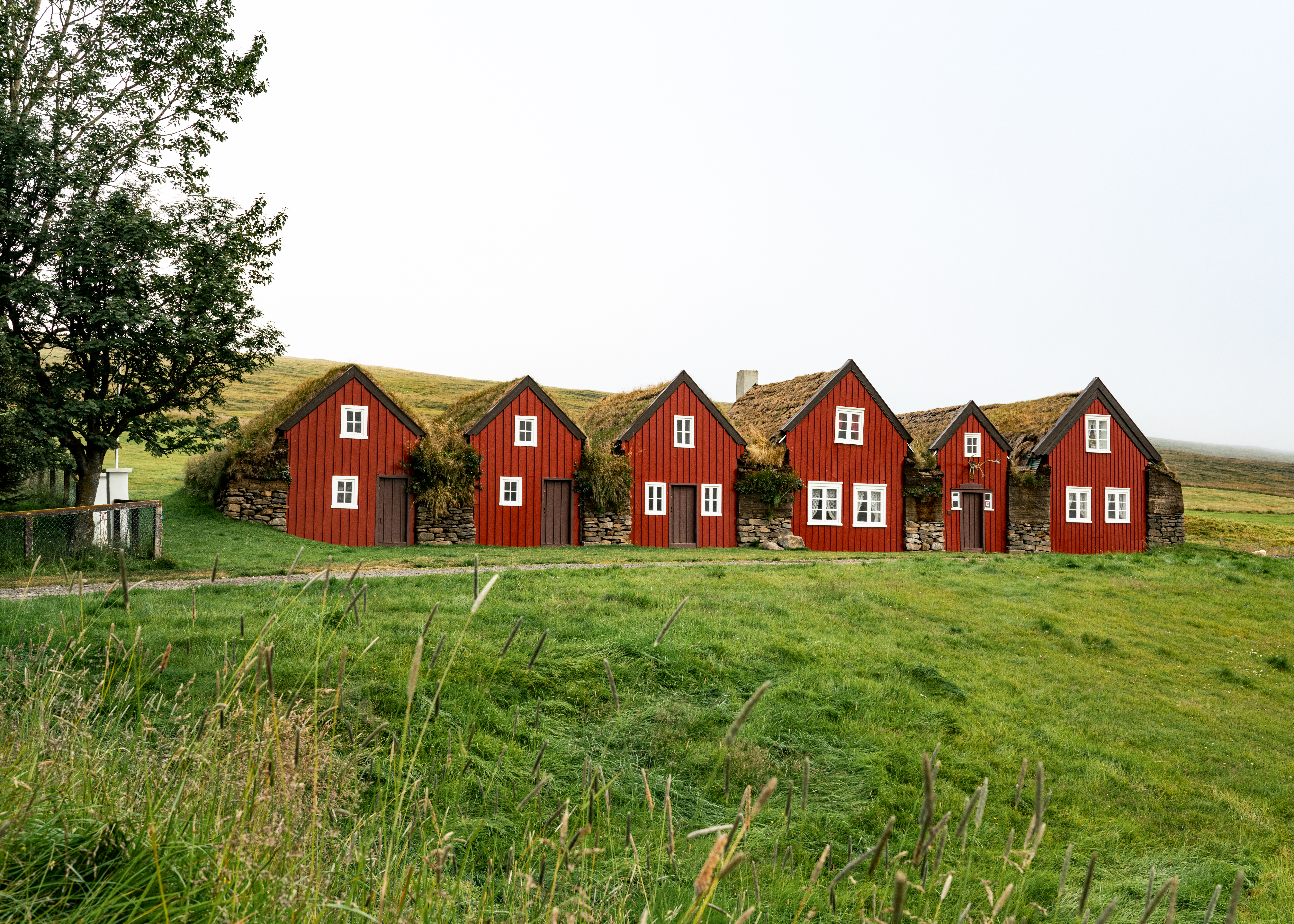
8. Flögufoss
Flögufoss is a beautiful waterfall in Breiðdalur valley near Breiðdalsvík in East Iceland. It drops about sixty metres from the Flöguá river into a narrow gorge framed by steep basalt and rhyolite slopes.
The waterfall is fed by a smaller cascade above, which used to flow through a natural stone arch before it collapsed in 2023. Today the feature adds a unique geological story to the site.
A short and easy path leads from a gravel parking area off road 966. It takes around fifteen minutes to walk to a viewing spot that showcases the full height of the waterfall and the peaks of Smátindar behind it
Flögufoss is quiet and atmospheric, a hidden gem off the beaten path.
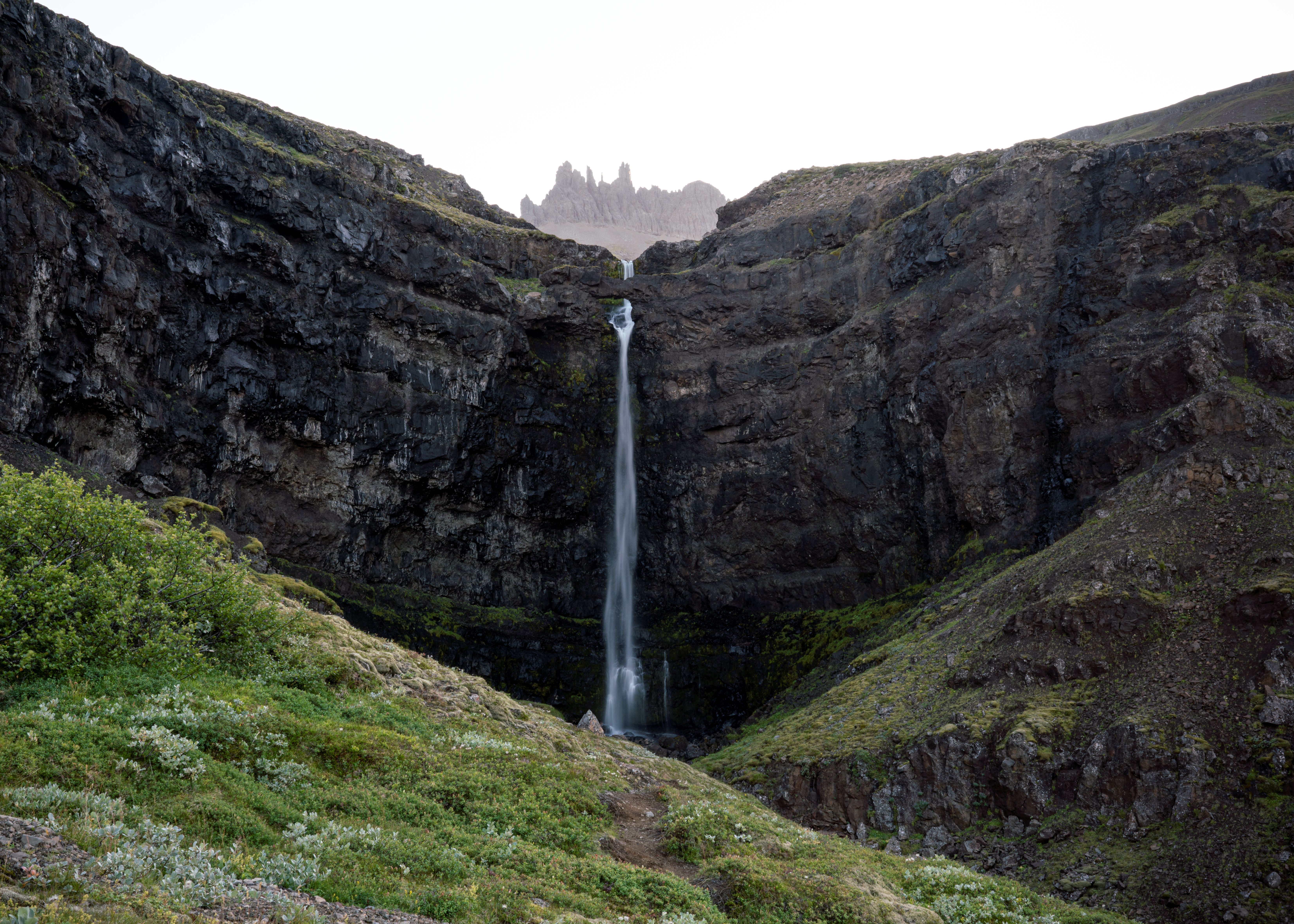
9. Innra-Hvannagil
Innra‑Hvannagil is a narrow rhyolite canyon near Njarðvík on the edge of Borgarfjörður Eystri. The gorge is easy to reach from a roadside parking area on Route 94. After just 100 meters of walking, you arrive at the canyon mouth, where steep walls of golden rhyolite are crisscrossed by dark basalt dikes.
A lively stream runs through the gorge and in places forms a small waterfall. The canyon walls glow in sunlight, revealing rich layers of mineral colour. Birdlife is present and over the top you can glimpse the surrounding valley slopes.
The walk is short, less than 500 meters into the canyon, and accessible to most people. Terrain is rocky and stream crossings are likely, so good footwear is advised. No marked trail is needed, just follow the stream into the gorge.
Innra‑Hvannagil is a perfect quick stop for travellers exploring the Borgarfjörður Eystri region. It offers dramatic geology, a sense of discovery, and a peaceful pause in a spectacular natural setting.
10. Búðarár Canyon and Waterfall
Búðará river flows right through Reyðarfjörður and above the town it carves a scenic canyon. A pleasant walking path starts near the wartime museum, follows the river through lush banks and leads to Búðarárfoss waterfall above the cliffs.
The canyon features steep rock walls, birdlife nesting on ledges and several viewing spots of the waterfall tumbling into a rocky pool below. The trail is easy to moderate and suitable for most walkers wanting a short nature escape just outside town.
This site makes an ideal stop on a self‑drive tour of the Eastfjords. It offers a refreshing break, a chance to stretch your legs and enjoy a peaceful riverside walk with dramatic scenery and a photogenic waterfall.
